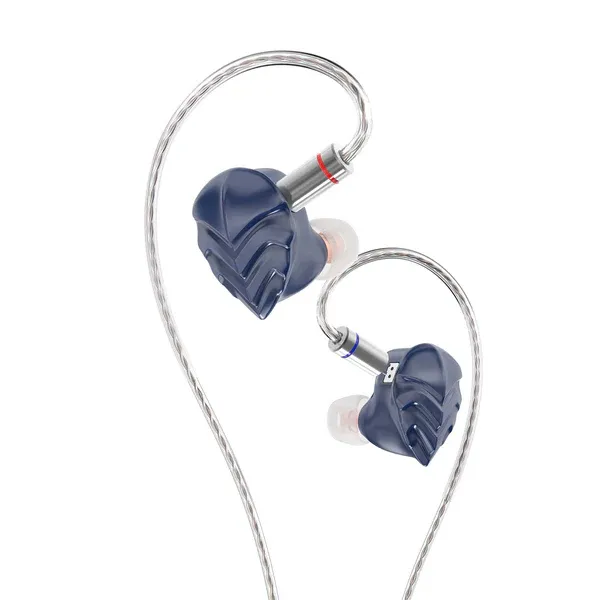Mk12 Turrisvs.SA6 Mk2
Sound & Specs Comparison
Information
Both IEMs are widely regarded in the audiophile community. See how they differ in terms of sub-bass response, upper mids, clarity, and overall tonality. Spider charts and rating breakdowns included.
Objective Comparison
Facts, details, stuff.
| General Info | Mk12 Turris | SA6 Mk2 |
|---|---|---|
| Brand | Hidizs | DUNU |
| Country | – | China |
| IEM Description | The MK12 Turris brings a striking design together with a smooth and full-bodied sound. It’s an all-rounder that aims to please a broad range of musical tastes while offering style and substance in equal measure. | – |
| Price Level | 100 – 500 | 100 – 500 |
| Housing & Driver | ||
|---|---|---|
| Driver Config | Single Dyn. Driver | Multi-BA |
| Driver Types | Dynamic Driver | Balanced Armature |
| Shell Material | – | – |
| Cable | – | – |
| Technical | ||
|---|---|---|
| Freq Range | 10-45kHz | – |
| Impedance (Ω) | 32 | – |
| Sensitivity (dB) | 111 | – |
| Crossover | – | – |
| Platform Info | ||
|---|---|---|
| Comments | 1 | 0 |
| Visit Count | 15 | 128 |
| External Reviews | 1 | 1 |
Meta Ratings
Sound-wise, SA6 Mk2 provides a softly more refined presentation, with improved detail retrieval, microdynamics, and instrument layering when compared to Mk12 Turris (8.3 vs 7.8). For comfort fit, Mk12 Turris performs subtly better (7.3 vs 6.6). The included cable with SA6 Mk2 shows substantially better strain relief and physical resilience. From the case design to ear tip variety, It provides a markedly more thoughtful unboxing experience.
| Mk12 Turris | SA6 Mk2 | |
|---|---|---|
| Sound | 7.8 | 8.3 |
| Comfort Fit | 7.3 | 6.9 |
| Build Quality | 7.5 | 7.5 |
| Stock Cable | 4.8 | 7.8 |
| Accessories | 5.0 | 7.0 |
Sound Characteristics
Mk12 Turris delivers s tighter sub-bass response, controlling low-end rumble with more precision than SA6 Mk2 (8.5 vs 6). It offers a stronger and more impactful bass response, adding weight and presence where SA6 Mk2 feels less assertive (8 vs 7). It translates bass vibrations into a b more visceral experience, while SA6 Mk2 lacks this tactile feedback (8.5 vs 8). It achieves m better warmth and coherence in the lower mids, bringing more realism to guitars and cellos (9 vs 7.3). Instruments like violins and brass are portrayed with s more brilliance on It, while SA6 Mk2 sounds slightly dull (9 vs 7.3). The highest frequencies on It feel a more natural and less rolled-off compared to SA6 Mk2 (9 vs 8.3). It paints a e broader sonic landscape, offering better instrument positioning across the stage (8 vs 7). It extracts low-level details c more effectively, helping subtle nuances emerge clearer than on SA6 Mk2 (8.5 vs 7.3). It separates instruments m more distinctly, helping complex passages remain coherent where SA6 Mk2 blends them (8.5 vs 6.8). It keeps competing frequencies under control m more effectively, reducing sonic congestion compared to SA6 Mk2 (8.5 vs 7). Notes played through It feel n weightier and fuller, giving a more satisfying impact than those from SA6 Mk2 (8.5 vs 7.3). Percussion and quick attacks feel b more physical and punchy on It, adding excitement over SA6 Mk2 (7.5 vs 7). It controls harsh sibilant peaks a more effectively, making vocals smoother than on SA6 Mk2 (9.5 vs 6.8). It presents instrument timbre with m more natural coloration, giving a realistic tone that SA6 Mk2 lacks (8.5 vs 7). Tonality on It is b more coherent and refined, yielding a more pleasing overall signature than SA6 Mk2 (8.5 vs 7.8). The grain and surface of instruments are rendered a more vividly by It, while SA6 Mk2 feels flatter (8 vs 7.3).
| Mk12 Turris | SA6 Mk2 | |
|---|---|---|
| Sub Bass | 8.5 | 6.0 |
| Bass | 8.0 | 7.0 |
| Bass Feel | 8.5 | 8.0 |
| Lower Mids | 9.0 | 7.3 |
| Upper Mids | 8.0 | 7.8 |
| Lower Treble | 9.0 | 7.3 |
| Upper Treble | 9.0 | 8.3 |
| Sound Stage Width | 8.0 | 7.0 |
| Detail | 8.5 | 7.3 |
| Layering | 8.5 | 6.8 |
| Masking | 8.5 | 7.0 |
| Note Weight | 8.5 | 7.3 |
| Slam | 7.5 | 7.0 |
| Sibilance | 9.5 | 6.8 |
| Timbre Color | 8.5 | 7.0 |
| Tonality | 8.5 | 7.8 |
| Texture | 8.0 | 7.3 |
Tonal Signature
// Nothing to compare yet.
